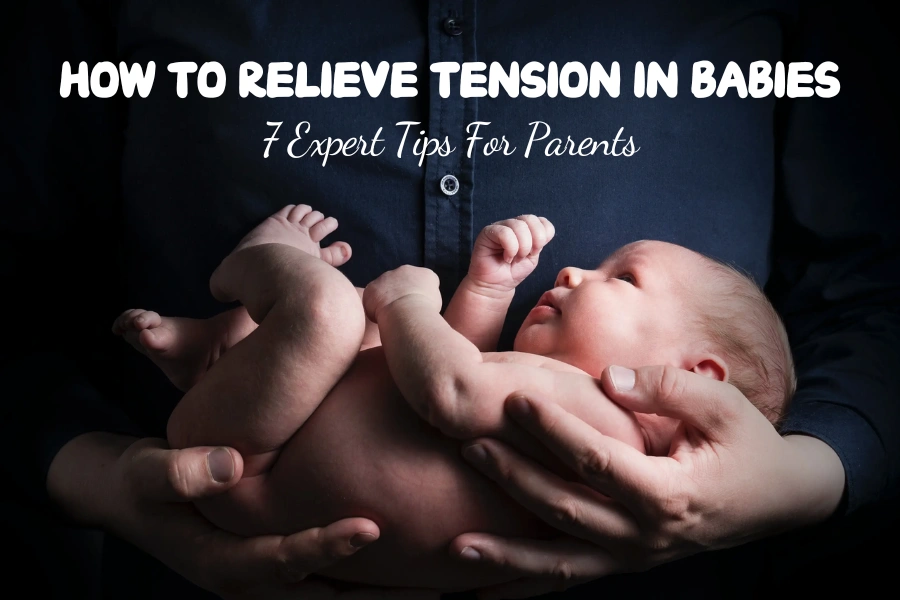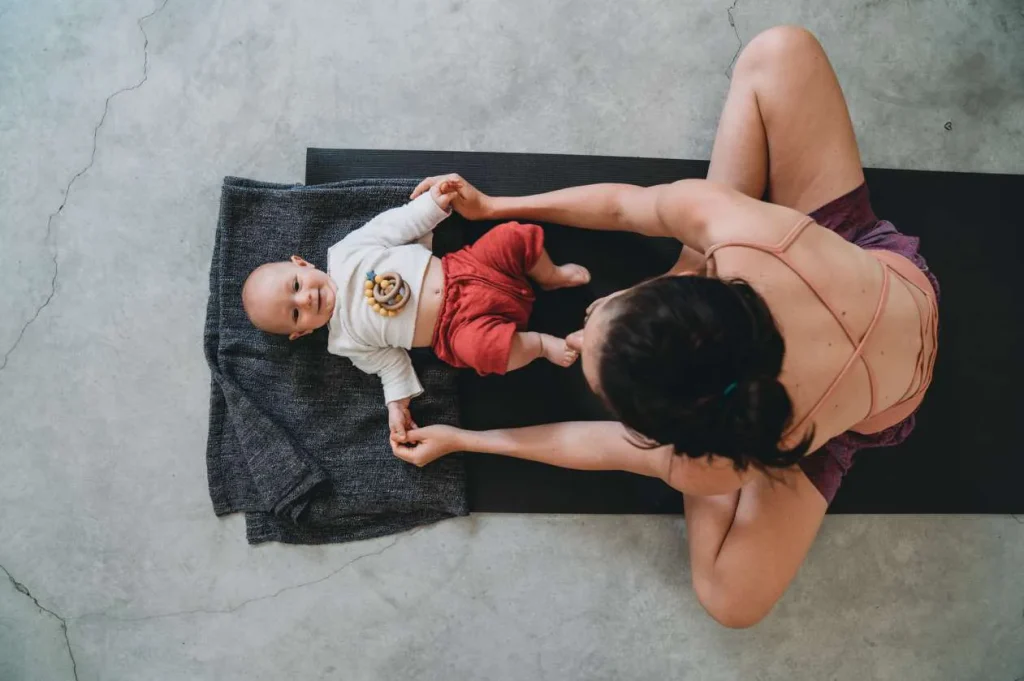
As parents, do you know that even a baby may feel uncomfortable because of tension after birth? The infant will consequently be fussy and cry. Many reasons can cause tensions in tight babies. Fortunately, understanding how to relieve tensions in babies can help parents make them feel comfortable just right at home.
This article will offer parents 7 expert tips every parent should know to help relieve tension in little ones. These strategies don’t only soothe them but also work to create bonding between a baby and the parent, making them feel secure and at peace. Keep on reading to know the proper methods on “How to relieve tension in babies”.
Why Does A Baby Get Tension?
Every baby goes through some kind of birth trauma. This can include uterine positioning, birth process, and method of delivery. The tension in babies, more so in newborns, could be a result of certain factors as described below:
- If your delivery was very quick or labor was prolonged.
- If you had twins and there was limited space at the end of pregnancy.
- In cases where the baby had to be assisted at birth with forceps or a ventouse.
The good news is that pediatric osteopathy can help alleviate this muscular tension and help the baby return to their natural alignment where they are meant to be.
How To Know A Baby Is In Tension?

Babies, despite their tiny size, can experience tension and discomfort. Here are a few normal signs for you to consider:
- A persistent tilt to one side, often due to torticollis
- A furrowed brow or a seemingly cross look
- Clenched fists can be a sign of discomfort or tension.
- The baby’s head is flat. This is regularly connected to torticollis as babies tend to favor one resting or sleeping position 1
- Upset stomach or digestive issues
- Mouth breathing while sleeping
- Disliking flat surfaces and preferring upright positions in your arms
- Displaying displeasure or difficulty when in a car seat
If you notice these signs consistently, it’s essential to consult with your pediatrician to rule out any underlying medical issues.
How to Relieve Tension in Babies: 7 Simple Tips From Experts
For comfort and general well-being, it is essential to know how to relieve tension in babies. As gentle parents, you can help them by incorporating gentle stretches and movements into their daily routine, which can significantly support easing this tension. Below are 7 simple tips that can guide you on how to relieve tension in babies effectively.
Hip Flexor Stretches
Hip flexor stretches will also help to release tension in the lower body of your baby, particularly at the hips and pelvis. To execute this stretch, carefully raise your baby’s legs to their chest while holding them gently.
This will release all the tension that gets built up around the hips, promoting flexibility, comfort, and maintaining the posture when the babies grow up. Constipation, gas issues, colic symptoms, or even delayed milestone development are some major problems that babies who have tight hip flexors may face.
Glute Stretches
Glute stretches mainly focus on the glutes. You might want to gently cycle your baby’s legs the way you do with a bike or just softly massage the gluteal muscles to relieve the tension. This is a simple exercise that enhances circulation, decreases stiffness, and helps the nerves function properly.
Side Body Stretches

Side-body stretches are excellent for relieving tension along your baby’s torso. Lie your baby down on his back, and reach his arms up and above his head while drawing his legs down toward his feet. Repeat on the other side. This stretch is going to help lengthen the side body, releasing tension or tightness. It can be very nice for many conditions, such as tongue ties, torticollis, and even reflux.
Sacral Rocking
Sacral rocking, or sacral pumping, is a gentle technique that focuses on the sacrum, the triangular bone at the base of the spine. This is very effective in loosening up the whole pelvis. To do this, hold the baby in a football or sitting position and wiggle the pelvis in the circle. You need to move the baby backward and forward as well as side to side.
Shoulder Girdle Stretch
This stretch targets the shoulder girdle and upper back, areas that can hold lots of tension, particularly in babies who may be carried frequently. This stretch involves gently moving your baby’s arms in a circle or softly stretching their arms out to their sides. The action helps relax the muscles in the shoulder area and alleviate tension.
Body Circles
This movement is good for full-body relaxation and tension release from the core and back muscles. It really is a very soothing exercise and can be done, even as part of a relaxation routine before sleeping.
This technique involves supporting the baby in a seated position in your lap. You will also want to support their head as you move them through full-body circles. Turn and rotate the infant slowly in both directions.
Guppy Pose
The guppy posture is a delicate extension that opens up the chest and shoulders. You sit on a chair, then lay your baby on their back and carefully support their head and upper body while allowing their front part to extend outwards. This pose can help relieve tension in the chest area and promote deeper, more relaxed breathing. This is also great support for babies having problems with tongue ties.
A Word From Babies Parent
How to relieve tension in babies – Those 7 expert tips are simple and every parent can do for their baby at home. Just keep in mind to practice them softly and without applying excessive force. Watch your baby’s reaction to know whether they like it or feel hurt or not.
Source
- Flat Head Syndrome (Positional Plagiocephaly) (for Parents). (n.d.). https://kidshealth.org/en/parents/positional-plagiocephaly.html#:~:text=The%20most%20common%20cause%20of,%2C%20swings%2C%20and%20bouncy%20seats. ↩︎






